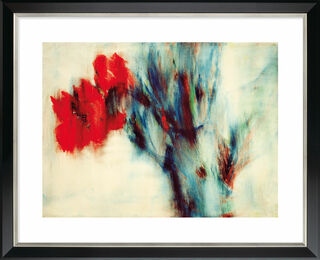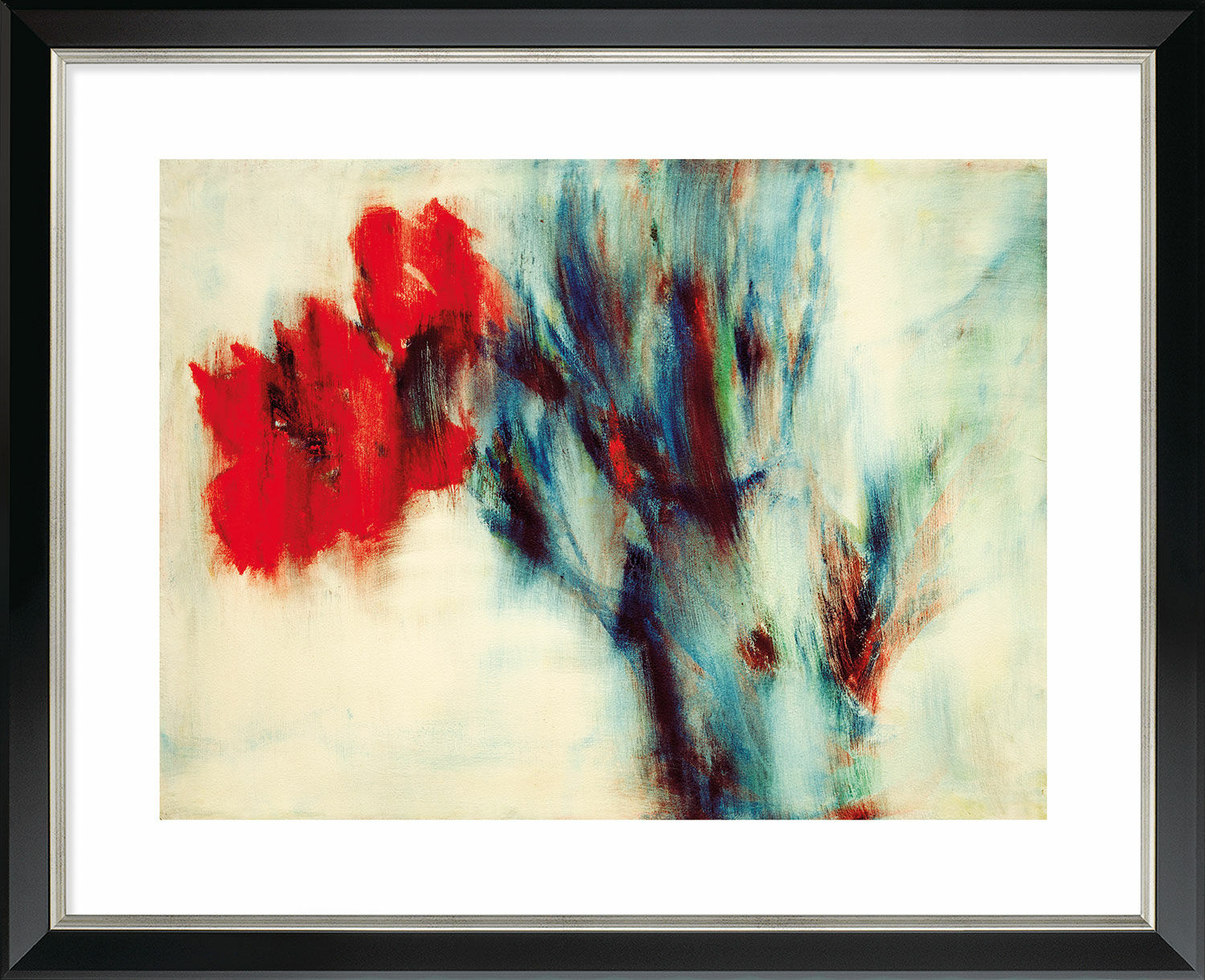Picture "Red Cannas" (1935), framed


Picture "Red Cannas" (1935), framed
Quick info
numbered | certificate | pigment print on handmade paper | framed | passe-partout | glazed | size approx. 52 x 64 cm (h/w)
Detailed description
Picture "Red Cannas" (1935), framed
Christian Rohlfs already impressed us with his drawing talent during the early years of his life. Flowers, whether as individual blossoms or as a bouquet arrangement, occupy an important place in Christian Rohlfs' oeuvre. The artist captured their subtle colourfulness and delicate beauty on canvas and paper from the very beginning of his work.
High-quality fine art carbon print on heavy Hahnemühle handmade paper. Noble framing in black satin with Munich gold and bevel cut passe-partout, dustproof glazed. Numbered with certificate. Size approx. 52 x 64 cm (h/w).
About Christian Rohlfs
1849-1938
The painter and graphic artist Christian Rohlfs was born in Niendorf in rural Holstein in the district of Segeberg in 1849. In 1864 he fell from a tree and injured his leg severely. The attending physician prescribed bed rest for the young Christian, and during his recovery, he passed the time with long drawing exercises. The boy's talent as a painter soon became apparent and was from then on also encouraged.
From 1870 Rohlfs studied at the renowned Grand Ducal Saxon School of Art in Weimar. Before he was appointed director of a painting school at the Folkwang Museum in Hagen by Karl Ernst Osthaus in 1901, he worked as a freelance artist in Weimar.
The painterly oeuvre of Christian Rohlfs is characterised by a wide variety of tendencies and influences and was always in a state of change. In his Weimar period, for example, the artist still followed the tradition of a classical landscape painter who was committed to realism and naturalistic academic painting. Before Rohlfs turned to the emerging but still ostracised Expressionism around 1906, he worked in a style oriented towards Impressionism and Neo-Impressionism in the years around the turn of the century. In 1911 he joined the artists' association of the "Berliner Secession", and from 1914, he was a member of the group of the "Freie Secession".
On the occasion of his 75th birthday, Rohlfs was honoured with a membership of the Prussian Academy of Arts in Berlin.
The artist died in 1938.






